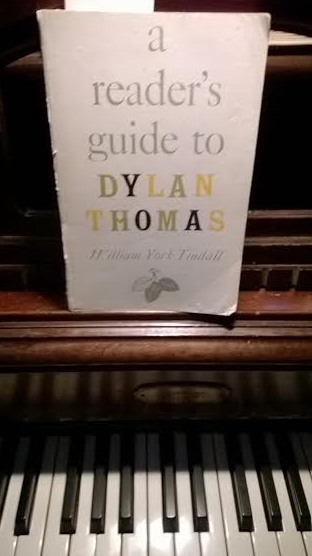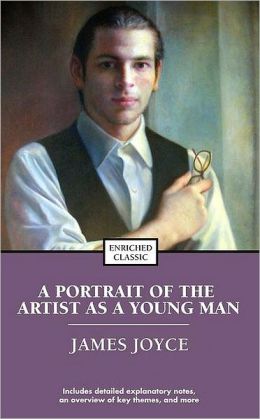While reading in William York Tindall’s A Reader’s Guide to Dylan Thomas this morning I realized how I turn to books for conversation. Tindall seems to have a section for each of Thomas’s poems. So after reading a poem aloud and thinking on it a bit, it’s interesting to see what Tindall has to say about it. I find it particularly gratifying that Tindall seems to see Thomas in intellectual relationship to one of my other favorites: James Joyce.

Speaking of the clever shape of “Do not go gentle into that good night,” Tindall says “This tricky shape … pleased young Stephen Dedalus.”
Dedalus is of course one of Joyce’s memorable characters. I am tickled that he, a FICTIONAL character, is cited. Tindall is writing in 1961 before the complete saturation of public culture by the false celebrity and expertise of actors and the characters they play. It’s hard to hear a news report these days that doesn’t reference a movie scene or star.
Stephen Dedalus while obscure is definitely one of the stars of my little galaxy. Cool.
In another commentary, Tindall compares Thomas’s female subject in “Into her lying down head” to Molly Bloom, another Joyce creation.
Speaking of Molly Bloom I am inevitably reminded of her when my ballet instructor asks her dancers to shout “yes.” I keep meaning to mention to her Molly Bloom’s famous monologue that ends Joyce’s Ulysses. This burst of erotic life force is a poem in itself and has had an enormous influence on my own embrace of the joy of life.

Speaking of the dance stuff, I had an interesting embarrassing experience yesterday. We came to the slow combination that dancers call the “Adage.” The teacher was repeating one they had done in the previous class. Before dancing it, she turned to me and said, “You weren’t our pianist last class, were you?” “No mam,” I replied.
This can be slightly awkward for a teacher who wants to repeat something. The department for some reason has decided to alternate pianists for the morning classes. The reasoning has never been explicit, but I assume it’s to broaden both the teacher’s and the students’ experience of music.
So going into the Adage I was determined to make a good clear improvisation that fit the combination the teacher had designed. I made it simple and beautiful as I could to help them dance the slow dance. In between repetitions of it, Julie asked me in front of the class if I had made it up or played something from memory. I assured her it was (like most of my playing) made up. She said something complimentary and the class burst into applause.
I was moved. My music is my most vulnerable moment. Playing for ballet most of the time I am in a weird position that I like quite a bit. I am not the center of the moment, but my improvisations can be helpful and even important. In a way, I am illustrating the dancing and the human bodies of the people in the room. It’s an odd objective kind of intimacy. It is a lot like being alone and composing. So I was caught off guard when the class resorted to typical ballet etiquette of applause. This is something they will do when one of them does something particularly well or elegant.
Julie told the class that she wants to make a CD of my improvisations and sell them. I told the class they would all have to buy one. Julie looked at me and said something like you won’t remember that piece, will you? No, I said.
But I came home and wrote down what I could remember. This is the first time I have wanted to capture an improv on paper for its own sake.

